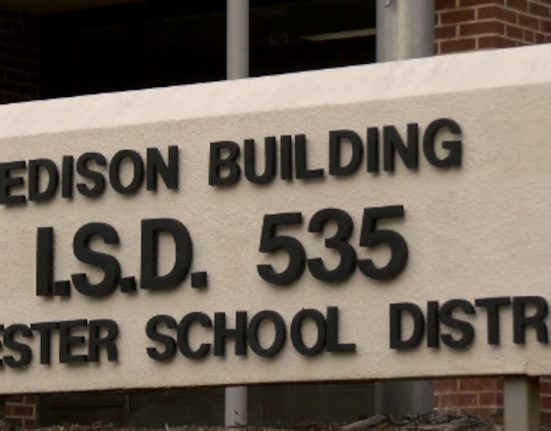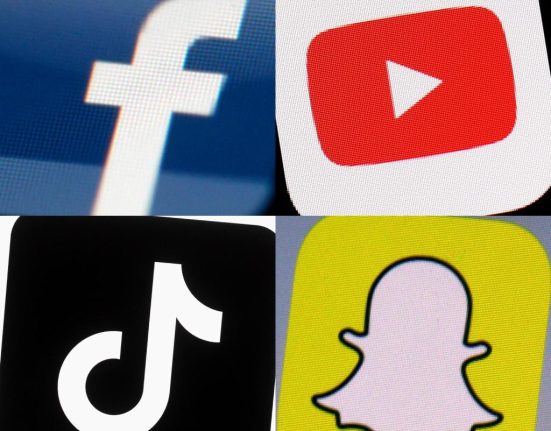Over strong objections from Democrats, House Republicans on the Education and the Workforce Committee advanced legislation Tuesday that would make dramatic changes to the federal student aid system.
The sweeping 103-page bill, known as the Student Success and Taxpayer Savings Plan, passed on a party-line vote after more than five hours of debate. The legislation would cap the amount of federal loans a student can take out, cut off the Pell Grant for students who attend less than half time, consolidate income-driven repayment plans and introduce a risk-sharing program where colleges are partially responsible for unpaid student loans. The bill, which would also reverse multiple Biden-era student borrower protection regulations, could save more than $330 billion in federal funding over 10 years, committee Republicans say.
It’s just one section of a larger budget bill that lawmakers are planning to use to fund some of President Donald Trump’s top priorities, like lofty tax cuts for the wealthy and a major crackdown on immigration. But House Republicans said the changes were more than just a means to fund his MAGA agenda.
“If there is any consensus when it comes to student loans, it’s that the current system is effectively broken and littered with incentives that push tuition prices upward,” Rep. Tim Walberg, a Michigan Republican and committee chair, said in his opening statement. Higher education is “on a fiscally unsustainable path, so we must deliver on the promise of economic mobility to our students and families. Taken together, the provisions in this package will do just that.”
Democrats on the committee argued the legislation is nothing more than a means to fund tax cuts for the wealthy that will force low-income and racial minority students to take on more debt and penalize the community colleges, regional universities and minority-serving institutions that educate those students. All in all, the bill will put the cost of a college degree out of reach for many, they said.
“I appreciate that my colleagues acknowledge that the cost of college is too high, and that Congress should reform the system. But the committee print before us today … seriously misses the mark of making college more affordable,” said Rep. Bobby Scott, a Virginia Democrat and ranking member on the committee. “Put bluntly, this Republican proposal will limit how much money middle- and low-income students can borrow from the federal government.”
Scott and other Democrats proposed 33 amendments—all of which Republicans voted down. They ranged from requests to prove the bill wouldn’t disproportionately affect certain institutions and increase costs for students to defending the Pell eligibility of part-time students and some consumer-protection regulations. Democrats also proposed replacing the income-driven repayment plan in the legislation with a more generous Biden-era alternative and striking the bill entirely. Other amendments touched on other issues unrelated to this section of the legislation, such as proposed cuts to Medicaid and the Department of Government Efficiency’s access to sensitive data.
Republicans countered that Democrats’ allegations that the bill would make college less affordable were, as Rep. Burgess Owens of Utah said, “nothing further from the truth.” The proposed changes to the federal aid system will lead to better loan terms and repayment options that are also fair to taxpayers and avoid wasteful spending, they argued.
The bill will now head to the House Budget Committee, where it will be folded into a complex omnibus bill before it is sent to the floor for a full House vote.
But even if it clears the House, the legislation still has a long way to go. The House and the Senate have differing ideas about how much federal spending they wish to cut and what programs they are willing to slash. The Senate is aiming to make at least $1 billion in education cuts, which is less than 1 percent of the House committee’s $330 billion reduction.
This reconciliation bill only needs a simple majority vote, or 51 yeas, to pass the upper chamber, but that will require almost all Republicans in the Senate to agree, which experts don’t think is a foregone conclusion.
Risk Sharing
One of the more contentious proposals in the bill is the risk-sharing provision, which would require colleges to repay the government a portion of students’ unpaid loans.
Republicans on the committee described the risk-sharing proposal as critical, adding that it would penalize colleges for forcing their students into unmanageable debt and would incentivize them to lower their cost of attendance.
“The best way for us to do that is not to loan [students] more money, but to reduce the cost so that they don’t need the loans,” said Rep. Randy Fine of Florida, who has been active in higher ed in the Sunshine State. “That’s what this bill does over and over and over again.”
But Democrats said it is misleading to say the bill and provisions like risk-sharing would reduce costs and increase graduation rates, arguing it would actually incentivize colleges to accept fewer low-income students and increase tuition or cut critical student-support programs in order to foot the bill of new penalties.
Rep. Alma Adams, a Democrat of North Carolina, called risk-sharing “a dire threat” especially to historically Black colleges and universities, which would have to pay an average of $1.7 million per year to account for the debt of their graduates.
The students at these institutions “started behind but are determined to get ahead,” Adams said, adding that they don’t default because they are failing; they default because they are “carrying the burden of generations of inequity.”
“This bill will tell colleges to take only the best students and leave the rest behind,” she added.
Multiple student advocacy and higher education groups opposed risk-sharing and other proposals in letters to the committee and fact sheets.
Third Way, a left-of-center think tank, noted in a memo Monday that the concept of risk-sharing “has a lot of intuitive appeal,” but the proposal “misses the mark for meaningful accountability.” Other provisions like loan limits and changes to the Pell Grant program will also “drive students into the private loan market,” the memo added.
And the Association of Public and Land-grant Universities told the committee that, if passed, risk-sharing would amount to a “staggering level of federal overreach” that penalizes colleges and universities for “decisions beyond their control.”
“The gravity of these changes would have a far reaching impact to current and future students,” APLU wrote. “There is a better way.”
If Republicans “truly believed” the bill would not raise the cost of college and the burden of debt for students, then they would have no problem passing proposed amendments that certify its impact on students and institutions, said Adams, the North Carolina Democrat.
“Let’s be clear about what this really means: This bill punishes students for being poor. It punishes students for needing to work. It punishes students for living in the real world,” she said. It transforms financial aid “from a bridge into a barricade.”







